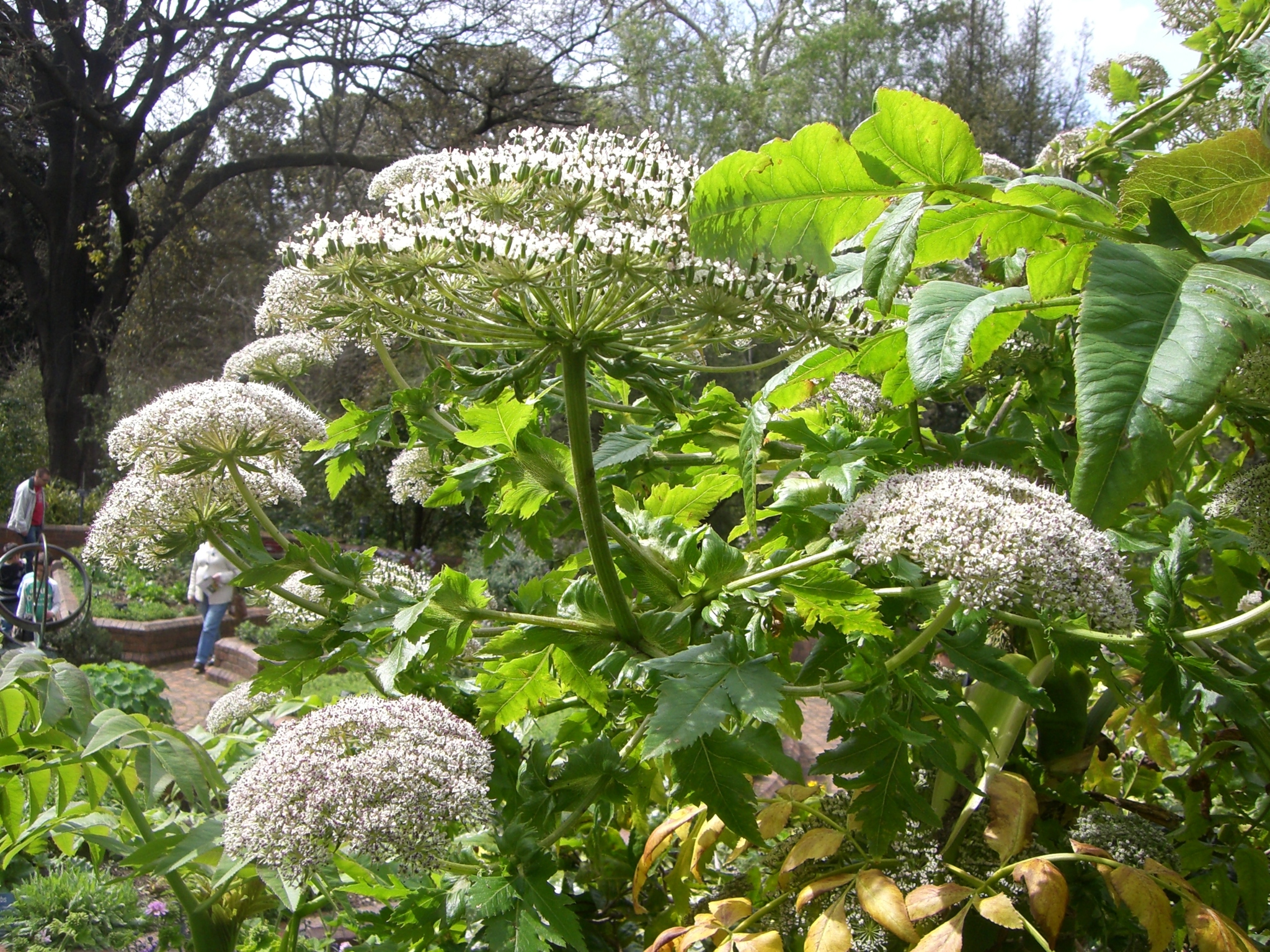
Name referring to the angelic healing properties attributed to this plant.
Monocarpic or perennial herbs, mostly with large taproots. Leaves compound, the bases sheathing and swollen. Flower clusters terminal, compound, with or without bracts. Flowers small, white to green, pink or purple. Fruit ovoid, flattened, the side ribs with broad wings.
Name referring to the angelic healing properties attributed to this plant.
Grown in herb gardens or as border plants for the strong form.
Seeds or occasionally by division.
The plant is edible; the leaves are used cooked or occasionally in salads, the stems candied, and extracts used in a variety of flavourings (as in the liqueurs Benedictine and Chartreuse), as well as in medicines and tonics.
Plant to 2 m tall with leaves 2-pinnate and flower clusters to 15 cm wide.
About 110 species from the northern hemisphere.
Source: (2002). Apiaceae. In: . Horticultural Flora of South-eastern Australia. Volume 4. Flowering plants. Dicotyledons. Part 3. The identification of garden and cultivated plants. University of New South Wales Press.
Updated by: Rob Cross, February 2018
